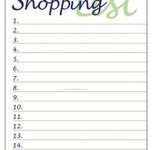You make your shopping list. Maybe you’re expecting a new baby, so you’ll need a carseat for sure. Kids grow fast and you need clothes and footwear. And rather than serve meals on boring grown-up plates, what could me more fun than tableware made just for kids with their favorite characters on them? And every child should have a lovey – a soft toy they can sleep with and carry everywhere. Oh – and don’t forget all of the toy cars and dolls kids can’t seem to do without.
That’s quite a haul to bring home, but that’s not all you’re bringing home and giving to your kids. When you buy all of the products manufactured just for children, you’re likely also bringing home a number of harmful chemicals – chemicals that can cause cancer, hormone disruption, and reproductive and developmental problems.
Makers of children’s products have reported widespread use of harmful chemicals under the landmark Washington state 2008 Children’s Safe Products Act (CSPA). Washington Toxics Coalition’s (WTC) report “What’s on Your List? Toxic Chemicals in Your Shopping Cart,” reveals the prevalence of chemicals that can cause cancer, hormone disruption, and reproductive and developmental problems in products readily available for purchase at many of the country’s largest retailers.
Among the total 4,605 reports of toxic chemicals in children’s products are reports of toxic flame retardants linked to cancer, learning disabilities and fertility problems. WTC, along with doctors, nurses, disability rights advocates, firefighters, and environmental groups, are urging the legislature to pass the Toxic-Free Kids and Families Act that will ban six toxic flame retardants appearing on the “Chemicals of High Concern to Children” list and prevent manufacturers from substituting them with other chemicals that are just as harmful.
In the report’s findings:
- Four different toxic flame retardants were reported in toys or car seats.
- Antimony trioxide, a carcinogen, was reported in toy vehicles.
- The Tris flame retardant TCEP was reported in baby car seats. It is a carcinogen and reproductive toxicant.
- TBBPA, linked to developmental and reproductive problems, was reported in toys, jewelry, and craft materials.
- The PBDE flame retardant deca-BDE was reported in the plastic of baby car and booster seats. In 2007, Washington passed legislation banning deca-BDE for certain uses.
Currently, the Washington state legislature is considering a number of bills to ban toxic flame retardants in children’s products and home furniture. WTC is urging the legislature to take swift action on the Toxic Free Kids and Families Act by the Washington State Senate that will ban the use of these toxic flame retardants and help prevent manufacturers from switching to equally bad or worse chemicals.
The bill (ESHB 1294) passed the House with broad bi-partisan support (72-25). A stripped down measure banning only two TRIS flame retardants (SB 6540) had a hearing in the Senate. Advocates are concerned the much weaker version that does not protect kids will move through the Senate.
Call Your Senator.
The biggest concern about the bill in the Senate is that there is no provision that establishes an open, public, transparent process to ban other toxic flame retardants in the future. The significant bi-partisan vote in the House demonstrates faith in this process.
The Children’s Safe Products Act is the first of its kind in the United States and has been lauded for shedding light on the use of harmful chemicals in children’s products. For the first time, under the 2008 law, medium-sized manufacturers with gross sales of $100 million or more were required to disclose whether they were using any of the 66 “Chemicals of High Concern to Children” in children’s products.
The chemicals being reported are linked to cancer, hormone disruption and atypical reproductive development, like early puberty. Among the chemicals reported are: flame retardants, formaldehyde, bisphenol A (BPA), parabens, phthalates, heavy metals and industrial solvents.
These reports of “Chemicals of High Concern to Children” being used in children’s toys, clothing, safety products and bedding were reported by manufacturers between March and September 2013.




